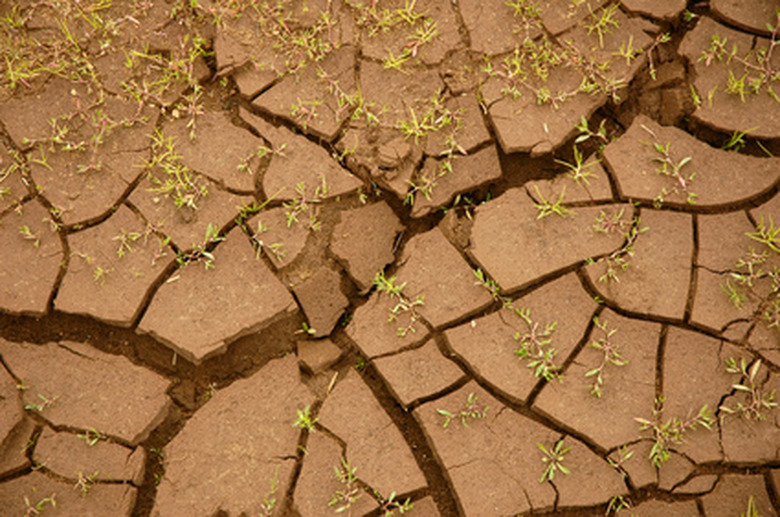Subsoil And Topsoil Density
Mineral grains in dense soils are pressed tightly together, causing them to absorb less air, water and nutrients that plants need. Roots find it difficult to penetrate dense, compacted soil. Soils may be dense because of their natural composition; they also can become compacted by heavy traffic of tractors, vehicles and construction equipment.
Topsoil
The surface part of undisturbed soil is the topsoil. In the mountains, topsoil may be as little 1 inch deep. In river valleys and coastal plains, it can be several feet deep or more. Topsoil ordinarily has a higher organic content so it is darker in color than the subsoil beneath it. This organic matter makes it less sticky or likely to cake than subsoil. Topsoil is easier to cultivate than subsoil, but may contain weed seeds. Dense topsoil may be lightened by adding sand and organic matter to loosen it.
- Mineral grains in dense soils are pressed tightly together, causing them to absorb less air, water and nutrients that plants need.
- Topsoil is easier to cultivate than subsoil, but may contain weed seeds.
Subsoil
Subsoil is the layer of soil that lies beneath topsoil. Since it contains less organic matter, subsoil is ordinarily lighter in color; it is generally more sticky and difficult to cultivate. Subsoil contains fewer nutrients and micro-organisms that plants need, but usually does not contain weed seeds. Dense subsoil beneath a thin layer of topsoil might not accept water. The pooling of water in the subsoil above it is an invitation to fungal-disease problems in roots.
Calculating Density
Soils contain solids in the form of organic matter and minerals, plus pores, or spaces that hold air and water. The more dense a soil is, the fewer pores it has; less dense soil has more pores. Agronomists calculate soil density by dividing the weight of soil by its volume. A cubic centimeter of water weighs 1 gram. Solid rock, which is very dense, weighs 2.6 grams per cubic centimeter. The topsoil of some forest soils is under 1 gram per cubic centimeter, light enough that if it were sealed against leakage it would float.
- Subsoil is the layer of soil that lies beneath topsoil.
- The topsoil of some forest soils is under 1 gram per cubic centimeter, light enough that if it were sealed against leakage it would float.
Ideal Density
The ideal soil for growing plants contains half solids and half pore space. Half of the pore space should be filled with water, and half with air. This density gives plants the air and water they need, and gives their roots space to penetrate. The particles of minerals give the plants physical support plus nutrients necessary for them to thrive.
Texture and Structure
The density of soil is largely determined by its texture, the size and shape of its particles, and its structure. Particles in clay, which drains poorly, are small and flat; particles of sand, which drains well, are large and round. The structure of soil is the way that primary particles of clay, sand, silt and organic matter are arranged into larger particles called soil aggregates. Structure gives the plants space between soil aggregates so their roots can grow and so they can obtain nutrients, air and water.
- The ideal soil for growing plants contains half solids and half pore space.
- This density gives plants the air and water they need, and gives their roots space to penetrate.
